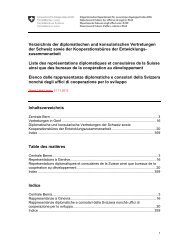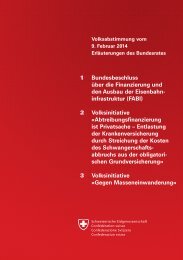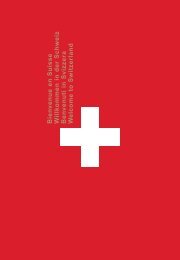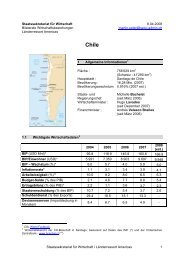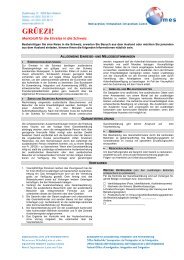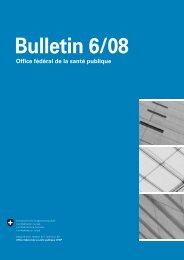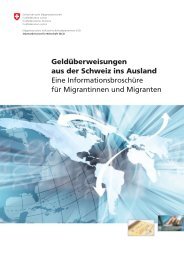SwissInfo
SwissInfo
SwissInfo
You also want an ePaper? Increase the reach of your titles
YUMPU automatically turns print PDFs into web optimized ePapers that Google loves.
CONSOLIDATED FINANCIALSTATEMENTS<br />
BarryCallebaut<br />
Annual Report2010/11<br />
27 Financial risk management<br />
The nature ofits business exposes the Group to avariety of financial risks including the<br />
effects of changes in market prices (commodity prices,foreign exchange rates,interest rates)<br />
as well as credit risks and liquidity risks.<br />
The Group’s overall strategy for managing these risks is consistent with the Group’s<br />
objectives to maintain cost leadership, reduce earnings volatility in acost-effective manner<br />
and minimize potential adverse effects of such market exposures on the financial performance<br />
of the Group. The Group’s risk management continuously monitors the entities’<br />
exposures to commodity price risk, interest rate risk and foreign currency risk as well as the<br />
use of derivative instruments.<br />
TheGroup manages its business based on the following two business models:<br />
• Contract Business: Sales contracts for industrial or gourmet chocolate,whereBarry Callebaut<br />
has entered into contracts with customers to deliver fixed quantities at fixed prices.These<br />
contractually fixed prices are generally based on the forward market prices of the raw<br />
material components valid at the contract date for the forward delivery date,atwhich the<br />
chocolate is planned to be delivered to the customers.<br />
•Price List Business: Barry Callebaut sets price lists for certain gourmet products. These<br />
price lists are normally updated at intervals of six to twelve months. Customers buy<br />
products based on the issued price lists without fixed commitments on quantities.<br />
Commodity price risks<br />
The Group’s purchasing and sourcing center operates as an integral part of the Group but<br />
also acts as abroker-trader in the sense that it makes sourcing and risk management<br />
decisions for cocoa beans based on market expectations, separate from the manufacturing<br />
business and its third party sales commitments. Its objectives are togenerate profits from<br />
fluctuations in cocoa prices or broker-trader margins.Additionally,the manufacturing of the<br />
Group’s products requires raw materials such as cocoa beans,sweeteners,dairy,nuts,oil and<br />
fats.Therefore, the Group is exposed to price risks relating to the trading business as well as<br />
to the purchase and sale of rawmaterials.<br />
The fair value of the Group’s open sales and purchase commitments and inventory changes<br />
continuously in line with price movements in the respective commodity markets.The Group’s<br />
policy is to economically hedge its commodity price risk resulting from its inventory,<br />
commodity derivatives and purchase and sales contracts. Cocoa price risk in inventory is<br />
hedged with short futures applying fair value hedge accounting. The related accounting<br />
treatment is explained in the section “Summary of Accounting Policies” under the caption<br />
“Derivative financial instruments and hedging activities”.<br />
The Group Commodity Risk Committee (GCRC) is acommittee consisting of key risk<br />
management stakeholders of the Group who meet on aregular basis (at least every six<br />
weeks) to discuss Group Commodity Risk Management issues. The GCRC monitors the<br />
Group’sCommodity Risk Management activities and acts as the decision-taking body for the<br />
Group in this respect. The members of the GCRC include the Group’s Chief Executive<br />
Officer (CEO), the Group’s Chief Financial Officer (CFO) –acting as Chairman of the<br />
committee –, the President of Global Sourcing &Cocoa and the Group’s Head of Risk<br />
Management (GRM).<br />
115



